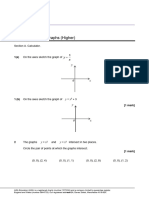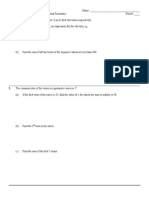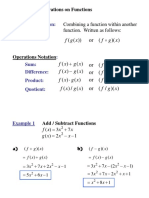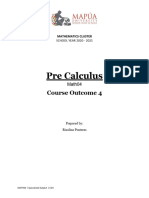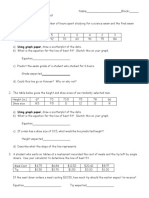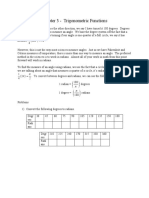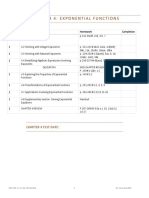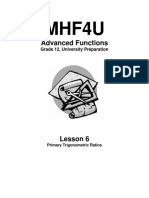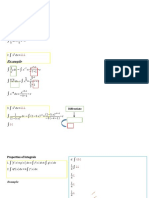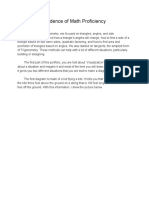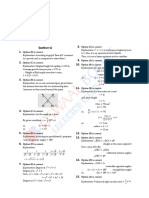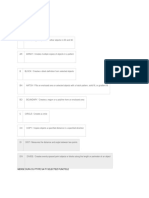0% found this document useful (0 votes)
82 views15 pagesUnit 6 Notes
This document contains notes on trigonometric equations for a math course. It includes definitions and examples of equivalent trigonometric expressions using cofunction, addition, subtraction, and double angle identities. It also covers solving compound angle and trigonometric equations, and proving trigonometric identities through algebraic manipulation. Practice problems are provided for students to work through relating to these concepts.
Uploaded by
x JoeCopyright
© © All Rights Reserved
We take content rights seriously. If you suspect this is your content, claim it here.
Available Formats
Download as PDF, TXT or read online on Scribd
0% found this document useful (0 votes)
82 views15 pagesUnit 6 Notes
This document contains notes on trigonometric equations for a math course. It includes definitions and examples of equivalent trigonometric expressions using cofunction, addition, subtraction, and double angle identities. It also covers solving compound angle and trigonometric equations, and proving trigonometric identities through algebraic manipulation. Practice problems are provided for students to work through relating to these concepts.
Uploaded by
x JoeCopyright
© © All Rights Reserved
We take content rights seriously. If you suspect this is your content, claim it here.
Available Formats
Download as PDF, TXT or read online on Scribd
/ 15




